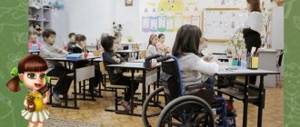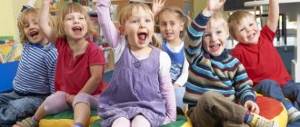Individual work of the class teacher with children at risk
From the experience of working as a class teacher.
Working with difficult teenagers Description of the material: I offer you an article that describes my work as a class teacher with “at-risk” children.
This material will be useful to class teachers of junior and middle levels. I have been working at school for 39 years now. There are so-called “difficult children” in any age period. These are children who are pedagogically neglected as a result of improper upbringing in the family or unhealthy relationships in it. It is no coincidence that the Soviet teacher V.A. Sukhomlinsky, emphasizing the reason for the appearance of difficult children precisely in the negative influence of the family, said: “The reasons why a child becomes difficult, unsuccessful, or lagging behind, in the overwhelming majority of cases lie in upbringing, in the conditions surrounding the child in early childhood.” However, the typical characteristics of a difficult child appear most clearly in adolescence; It is no coincidence that this age is also often called difficult. They say that one day a woman came to a sage and asked when she should start raising a child. The sage asked how old the child was. The woman answered six months. Then the sage replied: “You are exactly six months late.” I believe that the reason for the appearance of such children is improper upbringing of children in the family at an early age. The issue of “difficult” students is often discussed in the teaching community. Many teachers believe that teaching and educational work can be carried out with a “difficult” student only when he “corrects” and becomes completely different. If it is not possible to correct the student, then the only way out is to get rid of him. I spend all my working life with so-called “difficult” children. Our teaching community has looked for all sorts of ways to work with these children, and they are not getting smaller. I will even say that there are more such children. Great teacher V.A. Sukhomlinsky said: “You cannot get rid of students under any pretext. The art of education does not lie in turning a “difficult” student into a quiet, obedient one in one fell swoop (this is impossible), but in keeping him within the sphere of your influence and then putting him on the right path of life.” Therefore, we must accept each student as he is. And everything else depends only on each of us. The school has a very difficult role to play – the role of re-education. Re-education is a difficult and long process for both the pupil and the teacher. The student should become interested in the prospect of a new path. And the teacher must believe in the person, analyze the past, present and imagine the student’s future, without reproaching him with the past. Labor education will certainly help in solving this problem now, although it is almost impossible to force children to work for themselves and do it with pleasure. Classification of families at risk:
1.
Families with “difficult” parents. This is often a single mother whose child interferes with her personal life. The atmosphere in such a family is characterized by coldness and indifference. 2. Families where neglect prevails. In families of this type, parents tend to drink alcohol. Fathers and mothers are characterized by cultural limitations, poverty of feelings, and lack of spiritual connections with their children. 3. Families characterized by pedagogical illiteracy of parents. In such a family, parents do not understand their children, display complete ignorance of methods of influence, underestimate the importance of family education, and undermine the authority of the school and teachers. 4. Families in which priority is given to material well-being over spiritual life. In such families, children, as a rule, grow up to be selfish and overly practical consumers. And parents encourage these qualities in their children. 5. Families in which parents make excessive demands on their children, bordering on cruelty. In such families, children are punished, often physically, for the slightest offense.
And, as a result, children grow up cruel and embittered. In the 2014 – 2020 academic year, in our school, the number of seventh grade students increased and a third seventh grade was created. The class is formed mainly from students who came from other schools in our area. The number of children is 11, among them educationally neglected children and children from disadvantaged families. With the creation of the class, difficulties immediately arose: problems with attending classes, gaps in knowledge in almost all subjects, low motivation to study, social (family) problems. I was the homeroom teacher of this class for three years. The main work with the class fell on the shoulders of the class teacher. I had to solve many problems on my own. First of all, I compiled a detailed social passport of the class. In almost all families in which there were difficulties in raising children; These are families where neglect prevails. Below is a summary of the class: Class Statistics
Short social passport
Large families – 4; Low-income families – 6; Trusted families – 1; Single-parent families – 4, Unemployed parents – 5, Pensioned parents – 1; During the period of study in grades 7 - 9, 3 people were registered with the KDN; 2 families are registered in the SOP (socially dangerous situation in the family). As a result of this work, I realized that there was no special help from parents in organizing the educational process. In terms of educational work, there must be a mandatory section of work with children from the “risk group”, with their parents, with subject teachers, boarding school teachers, and the school’s social teacher: 1. Action: “September 1 - everyone at the desk”; 2. Carrying out daily monitoring of attendance at training sessions. Weekly information to the social teacher on school absences for children at risk; 3. Immediately informing parents about absences; 4. Organization of free meals. Assistance in collecting documents if necessary; 5. Providing financial assistance to large families. Assistance in collecting documents if necessary; 6. Conversation in class about the rules of student behavior and school uniform. If necessary, separately with students from the “risk group”; 7. Conversation in class about the daily routine. If necessary, separately with students from the “risk group”; 8. Enrollment of students in subject clubs and sports sections. Individual conversations with students from the “risk group”. Monitoring attendance at clubs and sections throughout the year. 9. Carrying out diagnostics of interpersonal relationships with the involvement of a teacher-psychologist, identifying children with problems; 10. Predicting student performance, especially for students from the “risk group”; 11. Work with subject teachers to prevent failure in the subject, especially among students from the “risk group”; 12. Coordination of joint activities of subject teachers and parents, especially for students from the “risk group”; 13. Informing parents about the features of the educational content provided for by the curriculum; in the ninth grade - informing parents about the procedure for conducting final certification and the features of preparing and conducting exams in subjects; 14. Conducting parent-teacher meetings and individual conversations with “at-risk” parents; 15. Visiting families jointly by a social worker and police officers, if necessary; 16. Involving the school administration in the prevention of interpersonal problems in the classroom, absences from classes without a good reason, and failure in subjects; 17. Development of creative activities and activities in the classroom with the mandatory involvement of “at-risk” children; 18. Encouragement of class students, especially those from the “risk group” for good results in studies, in the sports life of the school, participation in class and school events, etc.; 19. Coordination of joint activities of the class teacher and boarding school teachers. For each student at risk, I created an individual control sheet in the form: Individual control sheet for student I.D.
A very convenient form, I fill it out as needed. All information about teenagers is saved. In addition, in our school, the social teacher has created folders for each “at-risk” student with information about him: personal data of the student and parents; individual work carried out with the student and with parents, all information about the teenager entering the school and leaving the school. Class teachers and a social teacher periodically enter there all the important information about the student and his parents. By the end of the ninth grade, a good team had formed. In the 2016-2017 academic year, my students graduated from ninth grade, with two people with good and excellent results, 7 people with satisfactory results, and 2 people, unfortunately, stayed for the fall.
We recommend watching:
Raising difficult teenagers Age characteristics and difficult to educate Difficult teenagers and features of working with them Educational program for grades 5-6
Similar articles:
Raising a difficult teenager
Educational program of OER at school
Educational subprogram for grades 5-9 “Sports, health and me”
The question of the cultural use of the Internet by modern schoolchildren
Forms of extracurricular activities in elementary school
Plan for individual preventive conversations with children at risk
- Raise your children to be caring.
- Nature in nurturing good feelings in children.
- Cultivating interest in nature during joint walks in the park (forest).
- Development of observation skills while walking in the park (forest).
- Possible assistance from preschoolers in caring for indoor plants.
- Participation of the child in decorating the interior of the house.
- The right to loving and understanding parents, or Before raising a child.
- What should a child know about edible and poisonous mushrooms?
- Involving children in feasible labor in the garden plot.
- Do you need to have pets?
- Making toys from natural materials is one of the forms of communication with nature.
- Nature and mental education of the child.
- Traditions of the Belarusian people.
- Nurturing kindness in a child through works of art.
- About rewards and punishments for a child.
- So that the child does not lie.
- Fostering a culture of health in a family environment.
- How to improve a child’s memory, attention, and speech through games.
- If your child is left-handed.
- A book in the family. Family reading.
- What should a child's diet be like?
- Development of a child’s musicality in a family environment.
- Work is a serious form of education.
- Physical education and sports in the family.
- Father and mother are educators.
- We introduce the child to the fine arts.
- Games with children during the adaptation period.
- How to help children master the rules of the road.
- How to avoid stress, trauma and inappropriate behavior in children.
- In education you need to know when to stop.
- The influence of adults on the formation of a child's character.
- Be an example for children.
- Small folklore forms as a result of the development of a coherent language.
- Extracted fables and heat from the development of creative minds of schoolchildren.
- The role of father in the development of the educational system of a schoolchild.
- The wealth of vocabulary is an indicator of a child’s intellectual development.
- The role of drugs and vitamins.
- Hardening the child's body in a family environment.
- If a child gets sick...
- A daily routine is one of the conditions for protecting and strengthening a child’s health.
- Why it is necessary to read books with children.
- If there is a left-handed child in the family.
- Bad habits in adults and their impact on the healthy lifestyle of children.
- Why does a child bite his nails?
- How to usefully spend a day off with your child?
- Children's fantasies and fears.
- Good cartoons that help educate.
- Whims and stubbornness.
- Marital relations and their influence on the educational atmosphere.
- Left-handed child.
- Cultivating friendships in the game.
- How to spend a day off with children.
- The importance of drawing in a child's life.
- Child and book.
- Proper nutrition for a child at home.
- Hyperactive child.
- Childish stubbornness.
- Polite child.
- Play activities in the family.
- The role of sensory education in the development of children's cognitive abilities.
- About teaching safe behavior at home and on the street.
- The role of theatrical games in the development of children.
- Teaching preschoolers cultural and hygienic skills.
- Education of preschool children taking into account their gender characteristics.
- Gender education of girls and boys in the family.
- The role of fathers in gender-role education of children.
- The influence of parents on the upbringing of girls and boys.
- Raising and developing children, taking into account the gender of the child.
- Gender characteristics of the play of preschool children.
- The role of books in the process of gender socialization of preschool children.
- Aggressive child.
- Adaptation of a child to a preschool institution.
- Flu and its prevention.
- Play and children's health.
- What toys do children need?
- Winter injuries in children.
- If a child is stung by a bee.
- First aid for frostbite.
- A toy in a child's life.
- Play with your children.
- We teach the child to communicate.
- Developing self-care skills in children.
- Why are children different?
- Crisis of three years.
- How to overcome shyness in a preschool child.
- Sensory development of preschool children.
- Organization of physical activity in a child at home and on the street.
- Is drawing so important in a child’s life?
- Happiness is when you are understood.
- How to overcome shyness.
- Why do you need to develop fine motor skills?
- Prevention of colds.
- Instilling responsibility in preschoolers.
- Child and computer.
- Your child becomes a manipulator.
- Growing up in a single-parent family.



